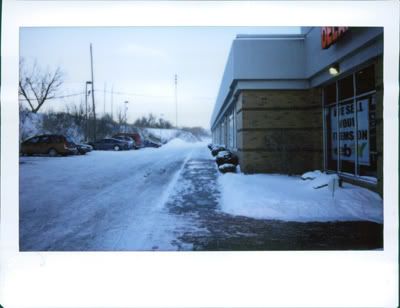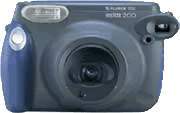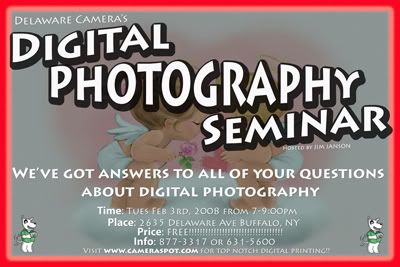I stumbled across this list on
kriskrug.com. The article was originally printed on Microsoft's website but is nowhere to be found. Hopefully this will help those who fear digital to educate themselves and tap into the wonderful world that is digital photography.
“Myth 1: A digital photo is inferior to film.
Reality: Many of the first digital cameras, even the professional models, produced grainy, off-color images. Now, the better digital cameras, in all price ranges, offer photo quality that is at least on par with film. The best digital cameras often exceed the capabilities of film. Color, sharpness, lack of grain—today’s digital cameras produce great-looking photos, even when shown at large print sizes. Film is good—and improving too—but digital easily keeps pace.
Myth 2: Digital cameras are big and heavy.
Reality: Early on, it was tricky to squeeze all of a digital camera’s many components into a body that was as trim as a film camera. Camera manufacturers were also experimenting with new camera designs, to provided a new shape, size, and look to photography. The net result was big, cumbersome, and sometimes strange-looking cameras.
Today, the pendulum has swung. Professional and consumer cameras alike now have a more traditional appearance. Plus, there’s no shortage of small, featherweight digital cameras that don’t skimp on quality or features in achieving their tiny footprint.
Myth 3: Digital cameras are slow to fire.
Reality: The best digital cameras, at any level, offer a responsiveness that is equal to a comparable film camera. Put another way, it is possible to select a digital camera that will fire when you need it to. Unfortunately, there are still too many lesser digital cameras that have not been designed to take the picture quickly when the shutter button is pressed. So, while it’s not accurate to say that all digital cameras are slow to fire, it’s still true of quite a few.
Myth 4: Digital photography is expensive.
Reality: In 1994, one of the first digital cameras aimed at professional photographers sold for almost $18,000. Today, a similar—but much improved—camera for a pro can be purchased for about $2,000. The prices of digital cameras, at both the professional and consumer level, have plunged over the years, while the cameras themselves have only gotten better.
Still, the price of a digital camera is generally higher than a similarly equipped film camera. Essential peripherals, like a desktop printer or external memory card reader, add to digital’s cost. Whether digital photography is cost-effective for you is based on how you use a camera now, and how you anticipate using a camera in the future.
If you currently shoot lots of film and pay for lots of prints, or you have a business that uses photographs on a regular basis, then the higher up-front costs of a digital camera are quickly offset by savings on film, processing and perhaps even scanning your film into the computer. Some simple calculations will tell you where you stand.
Myth 5: Transferring pictures to the computer is slow.
Reality: Transferring pictures to the computer can be slow and tedious. But it doesn’t have to be. That’s because a variety of low-cost options exist that accelerate the transfer process.
For example, an external memory card reader that connects to the USB port on the computer is many times quicker than the serial port connection on many older digital cameras. And a memory card reader that connects to an IEEE 1394 (also called FireWire, or i.Link) port is noticeably faster than a USB-connected reader.
The fastest memory card readers transfer three or four high-resolution JPEG format photos to the computer in one second.
Myth 6: There is no good, affordable software for browsing and editing digital photos.
Reality: Software companies have heard the message on this one. The result has been the development of a wide range of inexpensive (less than $50), full-featured applications for viewing and adjusting photographs. Choosing from the many good software options is the tough part now. The My Pictures folder in Windows XP helps get you started—it offers the ability to organize, view, and even rotate photos.
Myth 7: Making prints from digital photos is difficult.
Reality: Software companies have heard the message on this one too. For example, the Photo Printing wizard in Windows XP streamlines the printing of photographs down to a few mouse clicks. Popular image browsers have also beefed up their photo printing capabilities.
Plus, if you’d prefer to leave the printing to someone else, online photo services manage this task for you. All you need to do is upload the photos to the service of your choice, pick the size of prints you’d like, then wait to receive the finished product in the mail.
Myth 8: Prints from digital photos look bad.
Reality: How true this used to be. In its infancy, digital photo printers produced prints that did not compare favorably with traditional photo prints. The so-so quality of images from early digital cameras didn’t help matters.
That’s all changed. Not only have digital printing technologies dramatically improved, camera and printer manufacturers are working hard to ensure that what the printer prints is of equal quality to what the camera captured. The net effect is digital photo prints that are often indistinguishable from old-fashioned film prints.
This is a good thing. Though digital photography offers many new opportunities for sharing your photographs, one of the most popular ways remains the tried-and-true print.
Myth 9: Organizing and storing digital photos is costly and time-consuming.
Reality: With Windows XP, you have all the tools you need to quickly and efficiently organize yu can reliably store your photos for years to come. The CD Writing wizard in Windows XP can help there, too.
Myth 10: Digital photography is too much fun.
Myth 10: Digital photography is too much fun.
Reality: Can’t debunk this one—it’s true! ”
Here are some links to other articles on the comparison of digital VS. film
Advantages and Disadvantages of Film and Digital
1-Year Cost Comparision for Film vs. Digital










